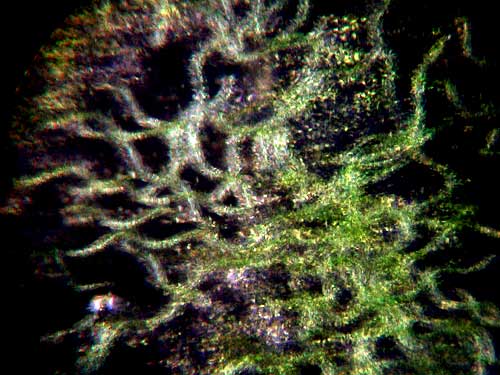
Reproduction
Most algae species utilize binary fission as their means of reproduction. This holds true for Arthrospira platensis. On the epidermis of each A. platensis cell, trichomes grow into hair-like structures. Trichomes are defined as fine outgrowths of appendages that have diverse structure and functions. The trichomes in A. platensis are motile with little or no constriction between adjacent cells.
There are two different types of trichomeous cells--pubescent and glabrous. Pubescent trichomes have hair where glabrous trichomes lack hair. A. platensis is understood to be pubescent with isodiametric, cylindrical, or disk cell shapes. Each of these cells branch out in a dendritic pattern which makes them look like trees.
When talking about the reproduction of A. platensis, the division occurs cross-wise and perpendicular to the long axis of a trichome. The daughter cells grow to be about the same size at the original cells. In other words, A. platensis reproduces by fragmentation of trichomes into motile hormogonia with the aid of necridic cells.

A. platensis doesn't interact like normal algae... let's find out why!